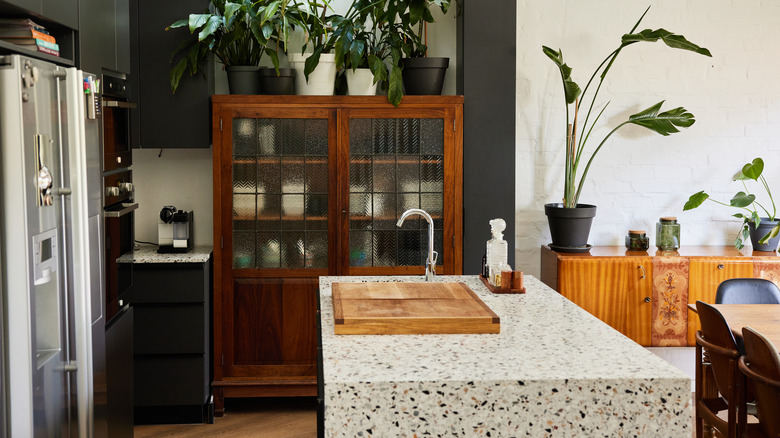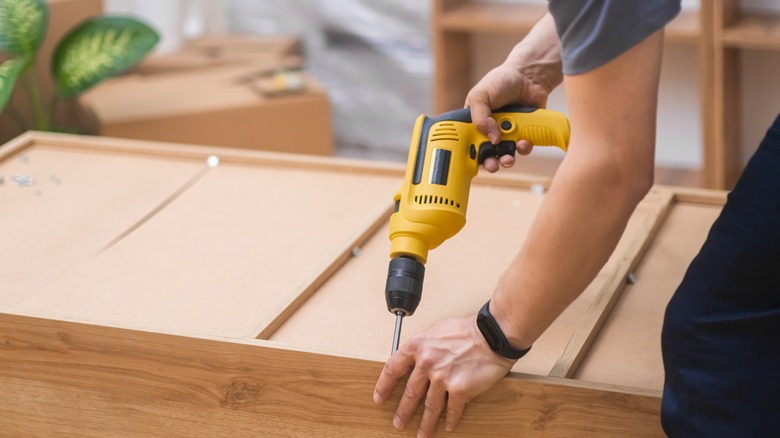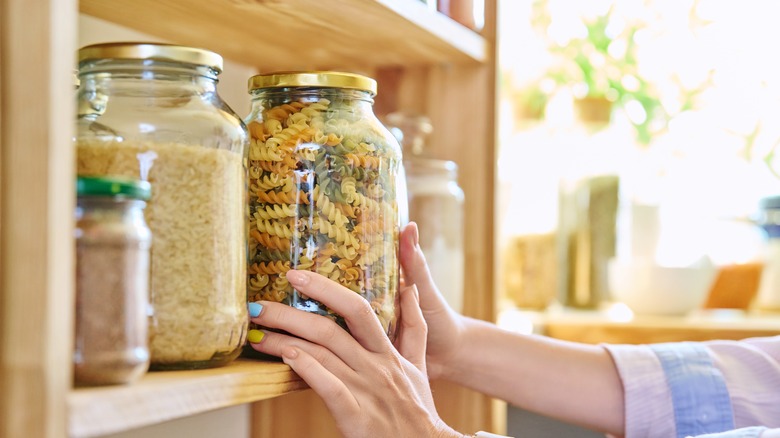Add A Pantry Cabinet For Extra Kitchen Storage With These Easy Tips
Kitchens must be organized in order to be functional. However, this is easier said than done. With food, cooking tools, and appliances, a kitchen can become quickly overstuffed and lack storage. One option is to update your kitchen with larger or more cabinets to accommodate the storage you need. Or add a walk-in pantry to hold everything you need. Still, these are both pricey options. Instead, adding a pantry cabinet is more budget-friendly and can help you achieve a perfectly organized kitchen. Traditional pantries are separate spaces with shelves that you can either walk or reach into. However, pantry cabinets can be tall cabinets installed like kitchen wall cabinets or free-standing pieces of furniture with shelves for storage.
Most cabinet pantries are between 24 and 36 inches wide, so they tend to take up less space. This makes cabinet pantries a good option for smaller kitchens or tighter layouts. Thankfully, cabinet pantries tend to come in the same standard depths as base cabinets, at 18, 24, and 36 inches. While a depth of 36 inches may seem like you'll have more space for storage, it can make it easier for items to get lost in the back of the cabinet. Instead, a depth of 18 or 24 inches can make it easier to stay organized while providing extra storage. However, size isn't the only factor to consider; with these tips, you can create or buy a pantry cabinet that makes the most sense for your space.
Should you build or buy a pantry cabinet?
When adding a pantry cabinet to your kitchen, you have two main options: build or buy. To create your own, you can hire a fabrication company to make a custom cabinet or simply buy ready-to-assemble cabinets. RTA cabinets are usually the least expensive of the two. Home Depot, for example, has a pre-made framed, unfinished pantry cabinet for $270, which is great if you have some space at the end of a run of cabinets where you can easily install the pantry. Be mindful to choose the right kitchen cabinet style to match the current facade.
Hiring a fabricator to create a custom cabinet typically costs between $500 and $1,200 per linear foot. However, this option allows you to seamlessly match the other cabinets, and you can choose the size and layout. However, it's better if you're planning to replace all of your cabinets. Otherwise, adding a singular custom cabinet might not justify the cost of professional labor.
The final option is to purchase a free-standing cabinet to use as a pantry. These come in a variety of sizes and finishes, so you're able to find one that fits your kitchen's aesthetic best. This 67-inch kitchen pantry from Wayfair is $470 and comes in three finishes. And this option from Walmart is more narrow at 18 inches and has an oak finish for $119.89. Both of these are good for adding instant storage to a kitchen, usually at a lower cost.
Customizations to consider for your pantry
As mentioned, pantry cabinet varieties are offered in standard cabinet dimensions. For smaller kitchens or tighter spaces, you may want to consider a width of 12 to 18 inches, but if you have more room to play with, 24 to 36 inches may work better. The standard depths are between 12 and 24 inches, though you can go deeper if desired. Pantry cabinets can be between 84 and 96 inches in height, the latter of which is the equivalent of 8 feet, the standard ceiling height for most rooms.
With a cupboard-style pantry cabinet, you'll want to match the door style as closely as possible so it blends in with your cabinetry. Then, you can stain or paint it the same color as the rest of the kitchen. However, this doesn't necessarily have to be the case if you choose a free-standing option. These can often act as a feature of the room, especially if you find a bold color or style.
Finally, you'll want to consider what you will store inside. For instance, if you wish to create extra hidden appliance storage for a blender or crockpot, you may want a deeper cabinet with more space between shelves. But if you're storing plates or snacks, then a standard configuration might work just fine. You can further enhance functionality by adding drawers or pull-out shelves, making your items more accessible and your kitchen more organized.


